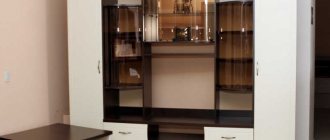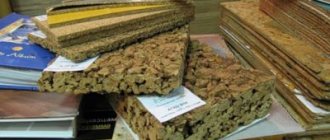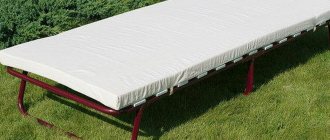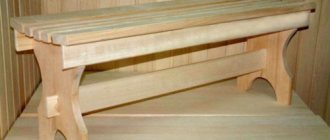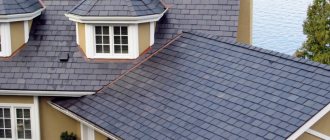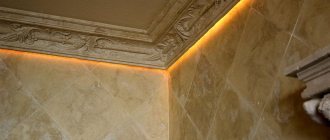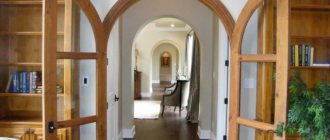- From timber
When setting up a steam room, it is very important to take care of the quality of its thermal insulation. Therefore, today we will tell you how to insulate walls in a bathhouse from the inside. Let's consider what materials to choose depending on the nature of the structure, what technology is used to lay them and the rules followed. Let us immediately note that it is ineffective to carry out such work outside the building, no matter what it is made of, timber, concrete or brick.
Advantages of internal insulation
- Reduces fuel consumption (either solid fuel, such as wood or coal, or gas) and reduces heating time.
- It is the key to the desired microclimate in the steam room. You will forget about drafts, dampness, cold, and you will be able to feel comfortable in any season.
- Ensures proper circulation of hot air, preventing condensed moisture from settling on various surfaces of the rooms. Thanks to this, the cladding remains dry, resists mold and fungi, does not rot, does not deteriorate longer and looks beautiful in a new way.
What does insulation do?
Many developers or those planning major renovations of their real estate, setting themselves the task of being well insulated, do not have a complete picture of the upcoming actions and their consequences. Let's look at examples of what we actually get if the thermal insulation of a bathhouse is installed in compliance with the technological map of this construction stage:
- First of all, of course, comfort. In the interior spaces of such a structure, it is easy to maintain the required temperature and humidity conditions, that is, to ensure the stability of a specific bath microclimate. In practice, this means the absence of drafts in the rest room or washing room, caused by supercooling of air masses near rapidly cooling enclosing structures. In the steam room, the human body will warm up evenly from all sides, fanned by warm air, caressed by infrared rays emanating from the surrounding surfaces.
- Economic profitability of operation by increasing the efficiency of using energy generated by a heat generator (furnace or boiler). It is expressed in direct material savings associated with a reduction in purchasing costs for fuel. If we make a rough comparison, then if the bathhouse is well insulated, its heating will require half as much energy resources. In addition, preparing the steam room for procedures will be possible in the shortest possible time.
- Safety of building structures and healthy indoor microclimate. This is important for buildings assembled from any type of materials. However, bath insulation, together with reliable vapor barrier, is of particular relevance for structures made of wood materials. Indeed, in addition to the fact that the air cooled near the external surfaces forms unpleasant air currents, a large amount of moisture condenses from it. Liquid that regularly collects on supporting structures, inside thermal insulation or under decorative cladding becomes a favorable environment for the development of microorganisms. The result is rotting of building materials, pollution of the bathhouse atmosphere with their decay products and mold spores.
Which insulation is better depending on the type of building
When choosing insulation for the walls of a bathhouse, it is important to consider what material it is built from.
From timber
In the case of a durable type of wood and a relatively large cross-section of each element of the frame, it is enough to simply caulk the cracks and treat the walls with impregnations against fungus and mold, as well as compounds that protect against moisture and fire.
In other situations, all rooms (especially the steam room) must be insulated with basalt wool - in one layer, using the “Pie” technology (we will consider it separately below), additionally laying foil material to minimize the harmful effects of steam.
Made of brick
It freezes quickly in the cold season. This means that measures need to be taken to ensure that a suitable microclimate inside is maintained even in the harshest winter. To do this you can:
- install second walls around the entire perimeter;
- or make a double thermal insulation layer.
To create the sheathing, it is better to use wood rather than metal, since the latter gets very hot during operation. Naturally, it is recommended to treat the prepared structure with agents against fire, rotting, and insects.
Made from concrete
In this case, you can insulate the walls in the steam room of the bathhouse from the inside and outside. Such a serious approach will result in the absence of problems with the masonry getting wet (due to condensed steam), and will become a measure that effectively prevents rapid destruction.
Here the craftsman upholsters the surfaces in the room with 10 cm thick mineral wool (or an analogue suitable in structure), and from the street he arranges a hinged ventilated facade, that is, he fixes the same basalt sheets and covers them with clapboard or siding. The method is relatively expensive, but it guarantees the correct microclimate.
Made from expanded clay concrete blocks
Here you will also need moisture-resistant material, but in combination with high-quality hydro- and vapor barrier. Plus, it is worth installing additional ventilation - this will help level out the increased level of humidity. It is quite acceptable to lay foil tape in as thin a layer as possible.
Is it possible to do without insulation? Let's understand the nuances
It would seem a completely logical question. Like, it’s already warm in the bathhouse, so is it worth spending money and time on additional thermal insulation if the owner comes here at most once a week? In fact, proper insulation is a guarantee of good rest . In an uninsulated bathhouse, the idyll will be disrupted by the collision of cold air with heated air masses; Plus, your mood will be spoiled for a long time by drafts, strong chemical odors, leaking floors...
On a note! Without high-quality insulation, the bathhouse will not be able, so to speak, to function properly, which will entail additional financial costs. Experts advise taking care of insulation during the construction stage.
An example of wall insulation in a bathhouse
. First of all, insulation is necessary to protect the premises from the penetration of cold air. The volume of steam in the steam room should be reduced as much as possible, but in such a way that the desired temperature is maintained there, while air exchange remains. Therefore, we conclude: in this case there is no way to do without insulation.
How to properly insulate the walls of a bathhouse from the inside
First, let's talk about the general principles. According to them, the greatest attention should be paid to the key rooms - the steam room and the wash room. All calculations - the quantity and volume of components - should be carried out with a reserve, that is, taking into account rough consumption. It is better to immediately refuse cheap impregnations, compositions, solutions - this is the case when it is better to spend money, but make a decision for the long term, because if repairs are needed soon, you will overpay much more than you saved.
When choosing a material, you need to choose one that has the following characteristics:
- non-toxic and environmentally friendly;
- low hygroscopicity;
- resistance to high temperatures and steam;
- the ability to maintain shape for a long time and restore it after physical stress;
- fire-fighting properties.
What materials are suitable for internal thermal insulation?
Today there are quite a lot of high-quality insulation materials on the market, but not all of them are suitable for bath conditions. To insulate this room, it is necessary to use materials that meet the following requirements:
- Non-toxic. In a bathhouse, under the influence of extremely high temperatures, harmful substances contained in the material are quickly released, so toxic insulation can cause poisoning.
- Non-hygroscopic. You should select a material that does not absorb moisture.
The insulation for a bath should be:
- resistant to high temperatures and steam;
- fireproof;
- environmentally friendly;
- durable.
There are several groups of insulation materials that can be used in a bathhouse:
- Organic. These are natural materials that can ignite from high temperatures, so they only insulate the rest room and dressing room.
- Mineral. These materials are suitable for insulating the steam room and any other parts of the bathhouse.
In accordance with the above requirements, the best heat insulators for a bath are described in the table:
| Name of material | Main characteristics |
| Mineral wool | The structure of the insulation consists of randomly arranged fibers. The material is non-toxic, practically does not absorb moisture, and is lightweight. Suitable for insulating walls, ceilings and wooden floors of bathhouses. |
| Extruded polystyrene foam | The structure is closed cells. Has high strength and compression resistance. Does not contain harmful components. Can be used to insulate concrete floors. |
| Expanded clay | It is a porous granule that does not allow moisture to pass through. Very light and durable, contains no toxic substances. Used for thermal insulation of ceilings and floors. |
“Pie” insulation technology
It is called so because, upon completion of the work, the wall is covered with several layers at once: thermal insulation, vapor barrier, cladding. You should start from top to bottom.
First of all, attach the bars to the load-bearing surfaces - at a distance from each other 1 cm less than the width of the mineral wool. Having created the frame in this way, you mount basalt slabs on it by surprise - carefully, without crushing the edge, ensuring a tight fit. Do not forget that gaps are places where moisture accumulates and “cold bridges” form.
Cover the resulting structure with a vapor barrier, so that its foil side faces the inside of the room, and be sure to seal all joints and seams with special tape. Then you perform the sheathing - directly on the wood of the still protruding base, at a distance of 5-10 cm from the previous layer. This way you will create a buffer zone in which the condensate will drain without coming into contact with the lining and without subjecting it to rot. And to finish, close the “Pie” with the lining.
We insulate the bathhouse from the inside: what do we need?
Any construction, repair and finishing activities begin with the preparation of materials, without which the implementation of the planned work will simply be impossible. Pay due attention to studying the list below: it is better to spend a little time reading and immediately buy everything you need, than to later return to the store and buy more of what you forgot.
Insulation
The main component of the list under consideration. The modern market offers a wide range of thermal insulation materials, but not all of them are suitable for use in a steam room - humidity and temperature may be too much for you. To insulate a bathhouse, the following are most often used: expanded clay (floor insulation), materials based on stone wool, and expanded polystyrene.
Important! It is strongly not recommended to use polystyrene foam to insulate the steam room itself - at high temperatures, material of dubious quality can most likely emit substances harmful to human health.
Comparative characteristics of the mentioned materials are given in the following table.
Table. Comparison of popular bath insulation
| Evaluation criterion | Expanded clay Expanded clay | Mineral wool Mineral wool | Expanded polystyrene Expanded polystyrene |
| Structure | Bulk material of natural origin. Presented in the form of granules with a cellular structure. | Fibrous structure. The arrangement of fibers is both vertical and horizontal, disordered. | Open cellular structure. |
| Moisture permeability | The material does not allow water to pass through. | Mineral wool insulation has virtually no tendency to absorb moisture. | Moisture permeability is extremely low. |
| Weight | Easy | Medium-light | Easy |
| Strength | High | Average | Average |
| Compression resistance | High | From low to medium, depending on the specific type of material and manufacturer technology. | Average |
| Toxicity | The material is safe | No toxic properties | Over time, it begins to release harmful substances |
| Possibility of use under high load conditions | Suitable | Depending on the brand of material | Not suitable |
| Tendency to decay | The material retains its original integrity for a long time | Durable insulation | Has a tendency to decay |
| UV resistance | Does not react in any way to exposure to sunlight | Characterized by high resistance to ultraviolet radiation | Prolonged direct contact with sunlight has an extremely negative impact on the performance characteristics of the material. |
As noted, expanded clay is suitable for insulating bath floors. Bulk material allows you to provide the required thermal insulation of both wooden and concrete structures. Mineral wool insulation is optimal for insulating both walls and ceilings. The best option, as noted, is a thermal insulation material based on stone wool, equipped with an additional foil coating - the key characteristics of such insulation at a higher level.
Prices for mineral wool
mineral wool
Mineral wool insulation with foil Mineral wool insulation with foil
Foil tape
Foil tape
In accordance with the current provisions of the technology for carrying out the work in question, the joints of the insulation boards must be glued with foil tape. This will create a sealed surface with the highest possible thermal insulation properties.
Prices for foil tape
foil tape
Wooden blocks
Wooden blocks
The elements of the thermal insulation coating are placed in the cells of a pre-assembled sheathing, for the assembly of which wooden blocks are used. Select the section of the beams in accordance with the thickness of the thermal insulation. For example, if you are installing a 10-centimeter thermal insulation layer, use bars with a similar thickness or width to assemble the frame.
Choose the distance between the bars 1-2 cm less than the width of the slabs or roll of insulation. For bulk materials, the optimal distance between the bars is 45-60 cm.
Fasteners
Fasteners
The sheathing elements (bars) are fixed using dowels/screws (if the surface is wooden) or anchors (if the base is stone). The length of the fasteners is also selected in accordance with the base material: for wood - 2-2.5 cm, for permanent structures - from 4 cm.
The specific length of fasteners is determined in accordance with the characteristics of their use. For example, during the installation of sheathing, the fasteners must be of such length that they ensure high-quality fixation of the beam/profile of the selected section. The cross-section of the beam itself, as well as the profile parameters, are determined in accordance with the thickness of the thermal insulation layer being installed.
Additional materials
If you insulate a bath using a material other than foiled mineral wool, you will additionally have to purchase a water vapor barrier film.
Vapor barrier
If you plan to pour a concrete screed, the set for work will increase to include the following items:
- reinforcing mesh;
- mixture for pouring the screed or materials for preparing it yourself (cement, sand, water);
- lighthouses;
- damper tape;
- polyethylene.
Prices for water vapor barrier film
water vapor barrier film
Ceiling insulation
It is carried out from top to bottom: it is simply more convenient to carry out work in this way, because it is easier to descend systematically than to take on one surface, skip another, and then return to it. It is this order that makes it possible to ensure the same microclimate at every point of the building - there will be no hot or cold zones. True, for this it is necessary to lay the materials overlapping, so that later it is easier to fasten them together.
Craftsmen thermally insulate the ceiling according to the following scheme:
- cover its surface overlapping with roll materials of your choice;
- the bars are mounted, forming a frame;
- place foil on top, covering all connections;
- glue the joints with aluminum tape (several times), evaluate the tightness;
- carry out installation;
- lined with clapboard finished to look like wood.
Insulating a steam room from the inside: procedure for working on the ceiling
The final stage of bath insulation is the thermal insulation of the ceiling in the steam room. Due to the special mode of operation, the highest temperature prevails in the ceiling space, which often reaches 160° C. Insulating the ceiling of a bathhouse with your own hands may differ in each case. The nuances depend on the design of the ceiling covering . Some bathhouses may have a lofted ceiling, while others may have a top setting or no loft.
Insulation of a bathhouse with an attic
If a bathhouse with an attic or attic is built on your site, it is recommended to carry out insulation as follows:
We will need clay, which we need to coat the ceiling boards with a layer of 20 mm. The use of clay is due to the fact that it perfectly protects the ceiling from moisture. The gaps between the boards must be filled with wood chips. You can also use other material for these purposes. The main thing is that it has heat-protective properties. For example, this could be expanded clay. You also need to pay attention to the fact that the created coating has a thickness of at least 200 mm.
Insulation of a bathhouse without an attic
Insulation of baths without an attic, both log and panel, is carried out according to the following scheme:
The vapor barrier material is laid first, followed by the insulation, trim, beams, and finally the ceiling boards. In different cases, the order of the ceiling insulation layers will vary. It is necessary to take into account the design of the room and the material from which it is made.
When insulating the steam room, special attention should be paid to the joints between the pipe and the insulation . To comply with fire safety rules, it is imperative to maintain a gap of 200 mm between the pipe and the insulation layer. To do this, you can do the following: build a box from rafter legs that will separate the pipe and insulation on the roof. A fire-resistant heat insulator is placed inside the box, which is ideal for stone wool.
Be that as it may, when constructing the roof and ceiling in the bathhouse, you must do everything in such a way that there are no places left there that will open the way for warm air to escape from the steam room and allow cold air to take its place. When insulating a steam room, you must solve the main problem - to prevent the formation of condensation. Do not forget that most often building materials begin to deteriorate prematurely due to contact with moisture.
Floor insulation
The technology is the same, regardless of the coating, concrete or wood. The only difference is the thickness of the pillow. And to control the evenness of the backfill, it is worth first applying markings to the base, conditionally dividing it into meter-long sections. If you plan to isolate the soil right away, then first compact it, cover the supporting surfaces around it with impregnations to protect it from moisture, sprinkle it with a layer of sand (10 cm), fill it with water, cover it with an overlap with roofing material and secure it with tape.
The order of the main work carried out by specialists is as follows:
- laying a vapor barrier film on the base, stretching it so that the edges along the walls are higher than the floor;
- installation of plasterboard profiles or other suitable guides and securing them with screws;
- placement of beacons at the required height in order to further control the level of the pillow;
- pouring expanded clay and leveling it using a slats or rake;
- arrangement of reinforcing mesh, filling it with concrete screed;
- laying the finishing layer.
You also need to know how and with what to insulate the walls of a bathhouse from the inside, not only in the steam room, but also in other rooms. The materials are the same, the general scheme of the wizard’s actions is as follows:
- waterproofing;
- placement of mineral wool;
- vapor barrier;
- finishing the resulting structure with clapboard.
This sequence of work is suitable for a dressing room, rest room and any other room that will not be used in conditions of high humidity and temperature.
To conclude, here are a few useful videos on the topic.
What is the best way to insulate the floor in a bathhouse?
Expanded clay is considered the best insulation for any type of floor, including bath floors. Expanded clay is a loose granular material that is made from baked clay. They can effectively insulate concrete, wood and even earthen floors. The thickness of expanded clay insulation depends on the thickness of the walls of the room, and the expanded clay layer should be twice the thickness of the walls. The uniform distribution of expanded clay is a guarantee of high-quality insulation. To obtain a uniform layer, the floor must be divided into meter-long cells using slats, timber, or a metal profile.
Frame for laying insulation on the floor
What and how is it better to properly insulate the floor in a bathhouse? For this you will need: expanded clay or polyurethane foam, sand, hardware, waterproofing materials, as well as the following operations:
- Compacting the soil of an earthen floor.
- Impregnation of all wood with moisture-resistant substances.
- Equipment of a sand cushion with a thickness of ≤ 100 mm or filling with expanded clay.
- Laying waterproofing materials on sand (expanded clay), extending onto the walls by 100-150 mm.
If the floor is insulated with polyurethane foam slabs, then a sheathing is formed according to the size of the slabs or a multiple ratio, and if it is a wooden frame, then it is opened with an antiseptic and fire retardants.
Methods and materials
A modern developer, on the one hand, has a noticeable advantage over his ancestors, since he has a huge choice of how and with what to insulate a bathhouse, and on the other hand, the wealth of alternatives presupposes a clear understanding of the technological features of using certain materials.
What used to insulate baths?
In the old days, man learned to make do with what the environment gave him. Technologies for using natural materials for building thermal protection have been developed for centuries and continue to be used to this day, as they are distinguished by their availability, environmental friendliness and low cost. Of course, taking into account the fact that the walls were built from thick logs - a material with good thermal efficiency, the thermal insulation of the bathhouse largely came down to ensuring the tightness of the butt joints. It was achieved by laying inter-crown insulation from moss or flax strands, even at the stage of construction, as well as subsequent internal and external caulking of the seams.
Log ceilings were coated with clay, and later they began to use sawdust or straw between the load-bearing beams. At the same time, the inner layer of steam and thermal protection was always made of coatings based on clay or its mixtures, for example, with chopped straw. Already in the 20th century, granulated expanded clay became widespread, which differed favorably from organic natural materials in that it is absolutely non-flammable, does not rot, and is also not afraid of rodents. Insulating a bathhouse with porous ceramic granules has only one drawback - the layer of them must be 2 times thicker than that of sawdust or straw.
As for the floors, they were made of a leaking type, where water flowed through the cracks between the flooring boards into a ground absorption pit. It was quite difficult to arrange thermal protection for such a design in practice. To some extent, a similar problem could be solved by organizing a ventilated space between the flooring and the ground.
How are baths now insulated?
Adherents of authenticity can still choose to insulate a bathhouse from the inside using only natural materials. However, despite the environmental advantages of natural raw materials, by themselves they can no longer provide a number of parameters with which the concept of “modern development” is associated. For example, it does not have sufficient durability, stability of properties, and does not guarantee the creation of the required level of comfort and thermal insulation. Therefore, natural materials for thermal protection are rarely found in their pure form, and products based on their processing or completely synthetic products are mainly used. However, modern insulation for a bath from the inside:
- must meet environmental factors, especially taking into account the extreme conditions specified for its operation;
- meet efficiency requirements, that is, have the lowest possible thermal conductivity coefficient. Today, such values are considered to be close to 0.03-0.04 W/m*K.
Mineral fiber wool
The most popular raw material for creating thermal barriers in rooms with any operating microclimate, and is ideally suited for bathhouse buildings. The starting material is of mineral origin, has no harmful emissions at any temperature, is not afraid of fire, does not rot, and is not subject to gradual chemical decomposition, like most polymers.
Important! When planning to insulate a bathhouse from the inside with your own hands, you need to take into account that cotton wool is different. Ignorant use of it can give the opposite thermal effect, accelerated destruction of enclosing structures and deterioration of the quality of the indoor microclimate.
Firstly, wool based on staple fiberglass, like its predecessor - slag wool, is a fairly soft material that requires increased attention to its fastening. For example, on walls with a high layer height, it will slide, gradually exposing sections of the structure. Therefore, it is recommended to lay glass wool on walls in low spans of horizontal sheathing, use it on ceilings, and completely exclude it for floors under screed.
Secondly, insulating a bathhouse from the inside using wool made from stone (basalt) fibers has one significant operational disadvantage. Although the fiber raw material itself is absolutely harmless to humans, the problem with using products made from it lies in the binding resins with which the finished product is impregnated. Knitting components, of course, make it possible to create mats that are resistant to mechanical stress of varying intensity and convenient for installation in guide frames or even under floor coverings. However, this same binder, when used at high temperatures in a steam room, begins to release a toxic phenol-formaldehyde mixture. Therefore, it is better to organize the insulation of a steam room from the inside using glass wool, but basalt wool is perfect for other rooms.
Styrofoam
The affordable material also attracts many due to its ease of installation. However, its use specifically in the internal space of the bathhouse is a big question. You can immediately exclude its installation in a steam room or furnace, since none of the polymers are designed for use at temperatures above 600C for environmental reasons. In addition, it is undesirable to insulate a bathhouse from the inside using it for wooden buildings, since foam sheets have extremely low vapor permeability, “do not breathe,” and spots of rot can form at the point of contact with wood.
The use of high-density foam sheets from ordinary or extruded raw materials is quite justified for thermal insulation of floors under screed.
Ecowool
Quite a promising heat-shielding material, gradually gaining more and more popularity. It is absolutely safe for humans under any conditions of use. Therefore, if you are planning to insulate the walls in a bathhouse from the inside with your own hands, then this will be an excellent choice. Ecowool will also fit well on ceilings, but for floors, without creating load-bearing frames, it is of little use, as it easily wrinkles, losing its thermal insulation properties.
The material is produced from recycled materials: waste paper, waste or discards from the production of corrugated packaging, cardboard or other pulp and paper products, while maintaining all the environmental benefits of shredded paper. Thanks to treatment with an antiseptic (boric acid), ecowool is not afraid of moisture, however, like mineral wool, it needs to create conditions for free ventilation. In order to improve the fire-fighting properties, the flakes of the finished product are impregnated with a fire retardant (sodium tetraborate). As a result, they do not support combustion and smolder with self-extinguishing.
It should be borne in mind that insulating a bathhouse from the inside with your own hands will only be possible using the dry method - pouring material into prepared niches or pockets. This poses some challenges to widespread use of the technology. There is a more practical wet method that allows you to distribute ecowool over any surface, but it requires the involvement of specialized specialists using inflatable pneumatic equipment.
Expanded clay
Although it is not one of the types of thermal insulators with the highest thermal resistance - its thermal conductivity coefficient at a density of 200 kg/m3 is 0.1 W/m*K, and at a density of 800 kg/m3 - 0.18 W/m*K - continues successfully compete with more efficient modern materials.
In today's construction, insulating a bathhouse from the inside using expanded clay is perhaps best suited for arranging floors. Of course, it will have to be poured in a layer 3-4 times thicker than for polystyrene foam or mineral wool. But this is not so significant, since we are talking about floors, where it is possible to create the necessary reserve for the height of the backfill, and the load on the supporting structures is not considered at all.
The advantages of expanded clay have already been mentioned above; all that remains is to add that it is completely safe for humans. It can be recommended for thermal protection of floors in all rooms of the bathhouse, including steam rooms and washing rooms.
Nuances of practical implementation
Having weighed all the pros and cons regarding the selected materials, before starting work, it is necessary to analyze the technological aspects of how to properly insulate a bathhouse from the inside. Otherwise, even vaunted products will be useless in the hands of an incompetent installer. From the most popular types of thermal insulation described above, we can already conclude that each of them is preferably used on certain building elements of the structure. Let's consider, for example, the option of installing mineral wool on the ceiling and walls, and expanded clay backfill for thermal protection of floors.
Floor
If previously the floors in bathhouses were made of a leaky type, which made it difficult to insulate them, now such structures are found in the most simplified or temporary buildings. Man's desire for comfort has led to the appearance of non-leaking floors, because without them it is impossible to fully insulate a bathhouse from the inside.
The principles for creating a lower heat-protective layer are not too different for structures sitting on the ground from those raised on pillars. In all cases, before placing the insulation, in our example expanded clay, it is necessary to prepare a waterproofed base. On the ground, this can be a 10 cm layer of compacted crushed stone, covered with a 4-5 cm concrete preparation (rough screed) and a layer of waterproofing. It is recommended to add special hydrophobic additives to solutions of all types of screeds in all bath rooms. Waterproofing for concrete preparation can be of any type: bitumen, polymer or cement. Then, expanded clay granules are poured over the waterproofing layer.
If the insulation of a bathhouse is carried out for a floor raised on pillars, then you will either have to backfill between the pillars (this is possible when the supports are low) with preparing the base on the ground, or cast a load-bearing slab over the columnar supports. Thick boards can sometimes play the role of a base plate.
In washing rooms, on expanded clay backfill (its layer is at least 30 cm), it is necessary to form a plane with a slope, in the lower part of which a receiving unit for the sewer system - a drain - will be installed. The inclined plane must also have water-repellent properties, so a reinforced screed with the introduction of hydrophobic additives is installed on it. It is advisable to coat the frozen surface with a penetrating cement-waterproofing composition, and then cover it with ceramic tiles with low water absorption. Removable wood flooring laid on top of the finished floor in the steam room and washing room will not interfere.
